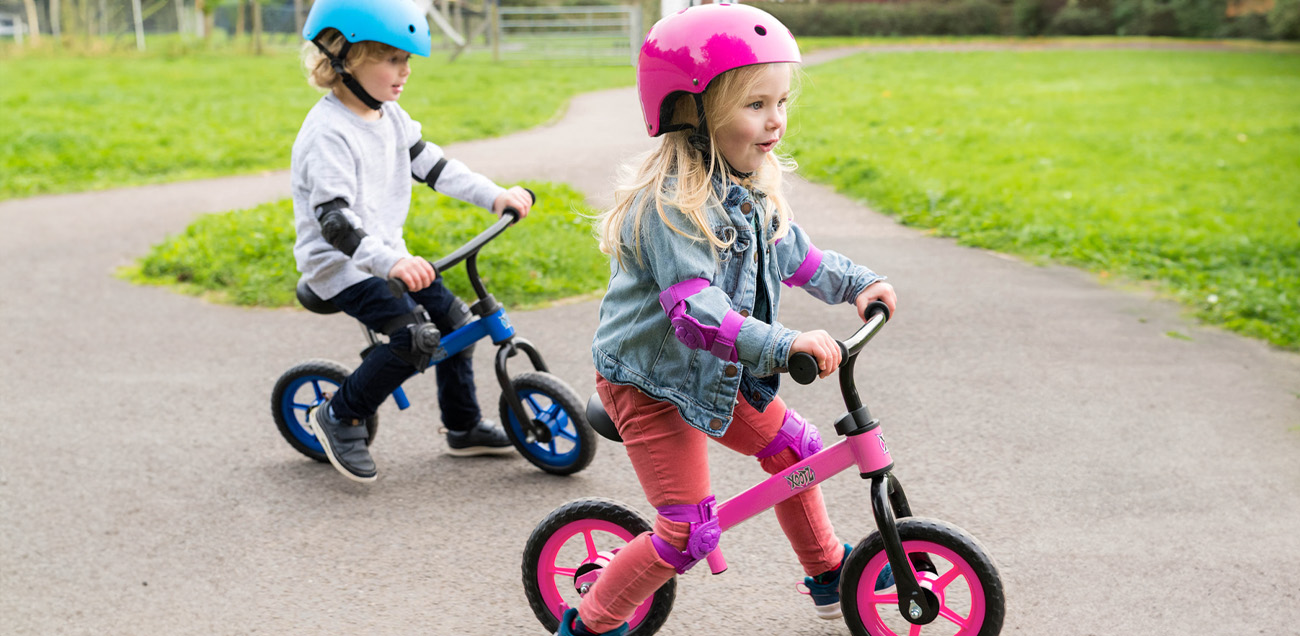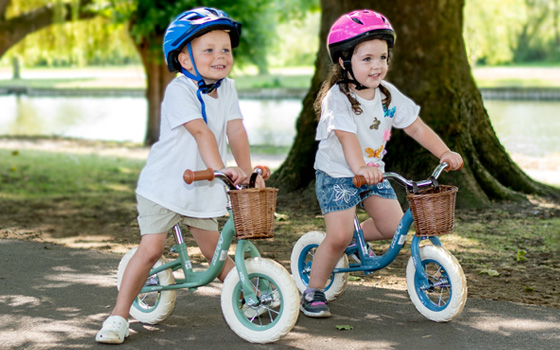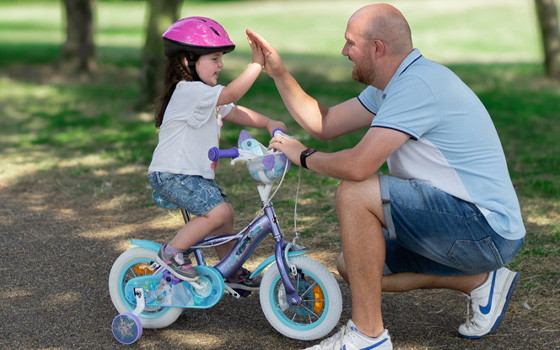The Easiest Ways to Teach a Child to Ride a Bike
6 min read
Last Modified 22 May 2025 First Added 16 May 2025

Teaching your child to ride a bike is an exciting milestone which helps them gain confidence and independence. The ability to ride a bike marks the start of many thrilling outdoor adventures for children, developing their sense of curiosity and courage from childhood all the way through to adulthood.
Learning to ride a bike should be enjoyable for both children and their parents or caregivers. Our guide aims to make teaching your child how to ride a bike easy. Read on to discover handy tips about bike selection, riding safely and how to build your child’s confidence.
The age at which children are ready to start learning to ride a bike can vary. However, children will generally be ready to begin learning between the ages of three and eight. Little ones under five will find it easier to start learning on balance bikes and pedal bikes with stabilisers (training wheels). While children’s physical development plays a significant role in their readiness to learn to ride a bike (this includes balance, coordination and strength), once they are aged five and over, they should be ready to ride a pedal bike if they show enthusiasm and motivation.
Teaching your child to ride a bike marks the start of an exciting journey that will fill you with pride, and naturally, you will want to ensure you are setting them up for success with the perfect bike. Choosing the correct type of beginner bike for your child depends on age and ability. We recommend starting with a balance bike so children can master the basic skills before coordinating them with pedalling.
Beginning with a lightweight balance bike is a great way to teach your child the most vital skill for cycling – balance! Children should be able to sit on the bike with their feet resting flat on the ground and knees slightly bent. This type of bike will allow your child to safely concentrate on keeping their balance and braking without needing to coordinate with pedalling. Children can ride by pushing off flat, even ground with their feet and gliding. As your child gains more confidence, encourage them to practice steering movements during gliding. Once your child has mastered balancing and gliding for at least five seconds, you can transition to a bike with pedals.

Stabilisers are popular when teaching children how to ride a bike. They can help provide nervous children with a sense of safety. However, be wary that they can hinder the development of children’s balancing abilities by giving a false sense of security. If using stabilisers, you must ensure they are correctly aligned to create enough traction and stability, particularly on uneven terrain. Bikes with stabilisers are also great if you want value for money – stabilisers can be easily removed once your little one is ready to begin learning to pedal without them.
Take a look at our Bike Size Guide for more help choosing the perfect bike.

Your little one’s safety is paramount while they are learning to ride a bike. Taking proper safety precautions will give you peace of mind and help minimise children’s fears of getting hurt.
Here are some safety considerations that you should prioritise:
Once your child is ready to progress to a pedal bike, follow our simple steps to help them pedal their way to success!
Building your child’s confidence (and your own) will help ensure that your child enjoys learning how to ride a bike and improve their resilience. Taking a supportive and encouraging role will prevent your little one from being put off getting back on their bike if they fall. Rest assured that wobbly first attempts will slowly but surely turn into steady and confident bicycle rides!
Here are our top tips for building confidence:
Ready to start your child’s cycling adventure? Explore our range of bikes to suit every age and ability.
Read our disclaimers.